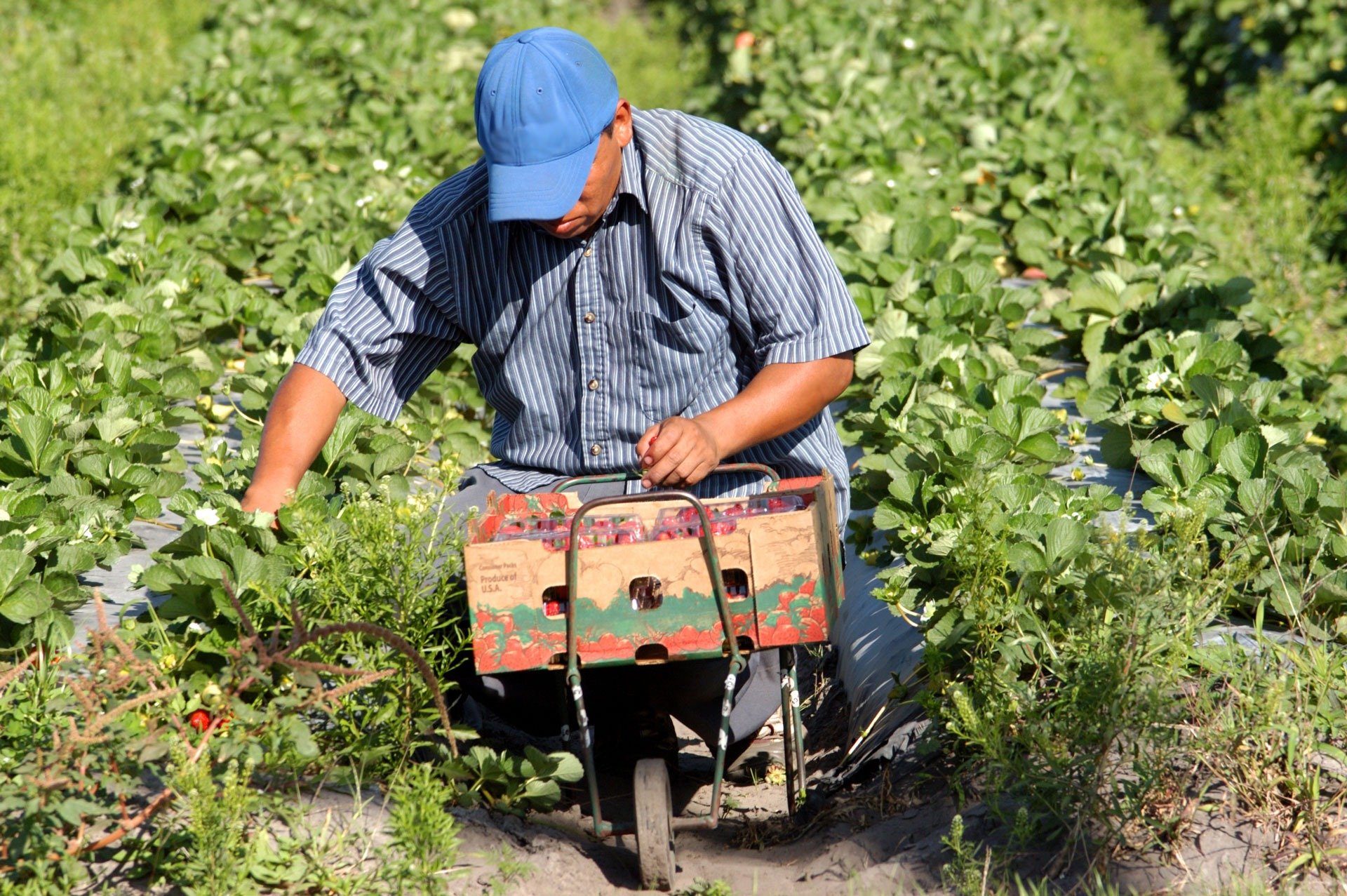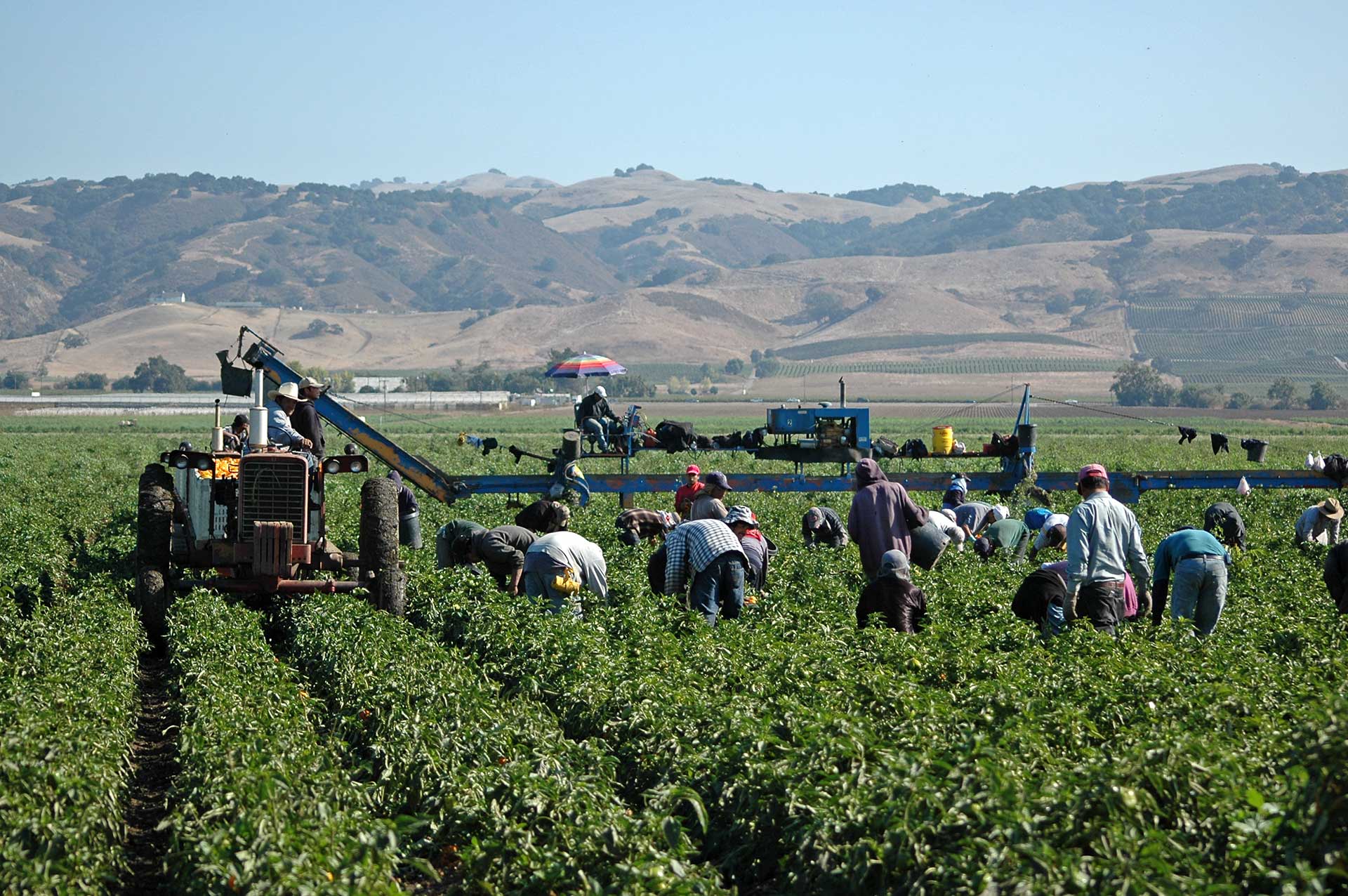A Year of Challenges and Successes for Workers in the Food System
For the people who grow, make and transport our food, the ongoing coronavirus pandemic and continuing climate challenges are making already difficult jobs harder. These situations have also exposed how willing profit-hungry employers are to put workers in dangerous conditions. Despite their essential worker status, food system workers have been hit hard by the virus, extreme temperatures, fires and inequitable immigration policies. And even with unsafe working conditions, low vaccination rates and employee deaths due to lack of proper safety measures, their employers have faced few repercussions.
But despite these challenges, workers have made strides in advancing labor standards in agriculture and food systems. Pushing against the problems showcased by the ongoing pandemic, climate change and immigration concerns, workers have successfully earned better conditions in several instances, showcasing how critical the labor movement remains for creating a fairer food system.
Not Over Yet: The Ongoing Pandemic
Coronavirus infections dominated the news throughout 2020, and workers in the food industry were some of the hardest hit, with more than 90,000 infections across the food system to date. Most of the 466 deaths caused by these infections were avoidable, if only meatpacking plants and other facilities had not been so slow to adopt basic protective measures. These failures, documented by groups like the Food Chain Workers Alliance, affected workers through every phase of the pandemic, amounting to continuous outbreaks across food production facilities. While the development of vaccines in late 2020 promised to lighten the burden of COVID-19 on communities across the country, food workers weren’t always high on the priority list despite their essential status.
Now, as cases of the delta variant spike around the US, COVID-19 remains a serious safety concern. Both vaccine hesitancy and vaccine access are issues for workers in the food system. Years of medical racism and current misinformation campaigns have led to serious mistrust of the medical establishment among Black and Brown communities, whose members often work on farms and in processing facilities. But this isn’t the main problem.
Survey data suggests that many — particularly those who saw family members, friends and coworkers get sick — are eager to avoid getting COVID-19, but they face basic barriers to getting the vaccine. Some lack information on where to get it or don’t have transportation to reach vaccination sites. Others worry about the side effects, which could cause them to miss work. Concerns about immigration status and a fear of deportation may also be keeping many away from vaccination sites, particularly as politicians like Iowa Governor Kim Reynolds dubiously blame immigrants for a spike in cases.
The Department of Health and Human Services has some specialty outreach programs to vaccinate workers in the food system, and community advocacy groups are also filling in the gaps around the country, setting up vaccination sites for farmworkers and others. Some employers, like Tyson Foods, have also recently set up their own vaccine mandates, which will hopefully lower transmission rates.
Still, higher vaccination rates may not be enough, particularly as new variants become more common. The Occupational Safety and Health Administration has already reversed its guidance for workplaces in the food system, urging employers to bring back universal masking after months of advising that vaccinated workers did not need special protection. This is still a voluntary measure, however. Pointing out employers’ earlier resistance to safety standards, the United Food and Commercial Workers Union has called for enforceable standards, like a legally binding mask mandate, that could protect workers from more dangerous and transmissible variants like delta.
A Hot, Smoky Summer
With another summer of record temperatures, droughts and fires, climate change presents ongoing challenges for workers. Extreme heat is the most tangible consequence of a warming climate, and few people feel it more acutely than farmworkers laboring for long hours under the sun. Dehydration and heat stroke are increasingly common, leading to death in some cases when workers can’t cool off and rehydrate. Even when workers avoid acute problems like heatstroke, they face longer-term issues: chronic dehydration can cause permanent kidney damage. Off the field, farmworkers in crowded housing may not be able to cool off at night, adding sleep deprivation (which compounds the effects of heat exhaustion) to the mix.
Heat problems are predicted to worsen as the climate warms: while the average farmworker experiences about 21 days where the heat index is unsafe, researchers expect that number to double by 2050. Despite this rising risk, there are no federal guidelines that address worker safety in extreme temperatures.
Individual states can create standards, but only a handful have. And these solutions, such as making shade structures and water available, tend to put the burden of avoiding heat stress on workers rather than employers. This limits their effectiveness since many farmworkers are paid piece rates — by every box, bag or fruit they harvest — and may feel pressured to keep working to make money or impress employers. Data from California, where shade structures and water are legally required, backs this up: even with these solutions in place, 50 percent of workers experience at least one symptom of heat illness while working.
More stringent protections, like mandated breaks or regulations that prevent people from working in the hottest part of the day, are much harder to enact because industry opposition is strong and enforcement agencies are understaffed. Still, it isn’t impossible: after the tragic death of a Guatemalan nursery worker, Oregon enacted the country’s strictest protections, including mandated breaks and careful monitoring of workers.
Heat isn’t the only risk from climate change: years of severe drought have driven one of the worst wildfire seasons on record, with more than 3.4 million acres of land across the US burned so far. Fire season is far from over, and the Department of Agriculture’s Forest Service warns that fires outside of the conventional season may become more common as drought continues. Wildfire smoke can damage lungs with extended exposure, compounding risks from other conditions, especially COVID-19.
Aside from a bill that failed to advance in 2019, there have been no federal responses to smoke risks for workers, leading to a piecemeal policy response that mirrors the problems with heat protection. Oregon’s recent heat safety provisions also include air quality standards, mandating that employers provide respirators when air quality levels pass a certain standard for fine particles. California legislators are considering similar legislation under the Farmworker Wildfire Smoke Protection Act, which would allow farmworkers access to the state’s stockpile of N-95 masks for essential workers and mandate fire safety training. Meanwhile, labor advocates in parts of California have also campaigned for hazard pay during fires and insurance for lost wages, as well as comprehensive fire safety training and other provisions.
A Challenging Immigration System
The pandemic and climate change are both external threats to workers in the food system, made even more dangerous by exploitative corporations that have blocked practical solutions. Employers’ ability to dodge COVID-19-related safety regulations points to a fundamental power imbalance between employers and employees. Avoidable accidents — like the tragic suffocation of six Georgia poultry workers after a liquid nitrogen leak — are too often brushed aside with small fines and few real consequences. This is a workforce with limited ability to advocate for itself, and while there have been attempts to shift this balance, the successes have been few.
Investigations this year into poultry companies revealed that many plants use staffing agencies to avoid liability for hiring undocumented workers, specifically targeting workers without driver’s licenses or immigration papers because they have a hard time finding other jobs. These workers are treated poorly, forced to do dangerous and unpleasant jobs, and do not receive the benefits other employees enjoy. Investigations into Tyson Foods revealed an example of these poor conditions for a mainly immigrant workforce, including a penalty system designed to scare employees from taking sick leave or going to see their families.
Changing immigration policy might seem like a fix, and legislation currently in Congress would streamline how migrant workers enter the country. But while the Farm Workforce Modernization Act has bipartisan support, advocates for immigrants say that its promises — like a path to citizenship for workers — are overshadowed by its caveats, particularly the way it expands certain temporary visa programs that limit travel, wages and other freedoms. Temporary visas are also becoming more popular in meatpacking plants, allowing companies to avoid hiring union workers and lower wages. Both unions and immigrant activists say that, without modifications, these visa programs are more beneficial to employers than workers.
Fighting Back
Battling all of these challenges, workers throughout the food system have banded together to advocate for better safety regulations and fairer compensation. The coronavirus pandemic and accompanying crises at workplaces helped propel the issues, causing many to reconsider what they’re willing to accept from employers. Simultaneously, more generous unemployment benefits created pressure for employers to pay higher wages, leading to immediate benefits for fast-food workers and others in food service, where calls for a $15 minimum wage suddenly seem feasible. The tight labor market has also given workers across the food system a better bargaining position.
In many cases, workers have gone on strike for a compensation package that recognizes their risks as essential workers. In early 2021, unionized workers at Hunts Point, New York, one of the country’s largest produce distribution centers, went on strike after working through the early months of the pandemic that killed at least six union members. After getting their message amplified by national politicians and celebrities — they called for a $1-per-hour raise — the workers renegotiated their contract.
Other food workers saw a disconnect between company profits and their compensation. While Frito-Lay owner PepsiCo earned record profits during the pandemic, workers faced 80-hour work weeks and watched as plant operators ignored a death on the factory floor. After a three-week walkout and boycott, workers at a Kansas Frito-Lay plant eventually secured a contract with guaranteed days off. Now, members of the same union are leading a strike at Nabisco, hoping to secure better benefits for employees there.
These victories show that organized labor can still be a powerful bargaining tool for workers, even after decades of declining union membership. Considering the increasing corporate consolidation (and accompanying pushes for deregulation) that’s occurring throughout the food industry, a well-organized workforce is essential for ensuring safer workplaces, a fairer food system and a more secure food supply.
Top photo by Debbie Ann Powell/Adobe Stock.
More Reading
Restoring Native foodways requires returning land. What happens when it's contaminated?
June 10, 2025
Big Banana’s bitter labor truths
May 13, 2025
The racist roots of Black land loss
February 25, 2025
Why worker welfare is critical to truly “sustainable” wine production
January 10, 2025
How we came to rely on emergency food
September 30, 2024
Food and farmworkers need protection from heat and other dangers
August 28, 2024
How can ecofeminism help us envision the future of food?
July 18, 2024
A new agritourism network connects and promotes farmers of color
June 11, 2024
After season 2 of ‘High on the Hog,’ there is more to be told
March 19, 2024
The 'unseen hands' of the food system
February 27, 2024



